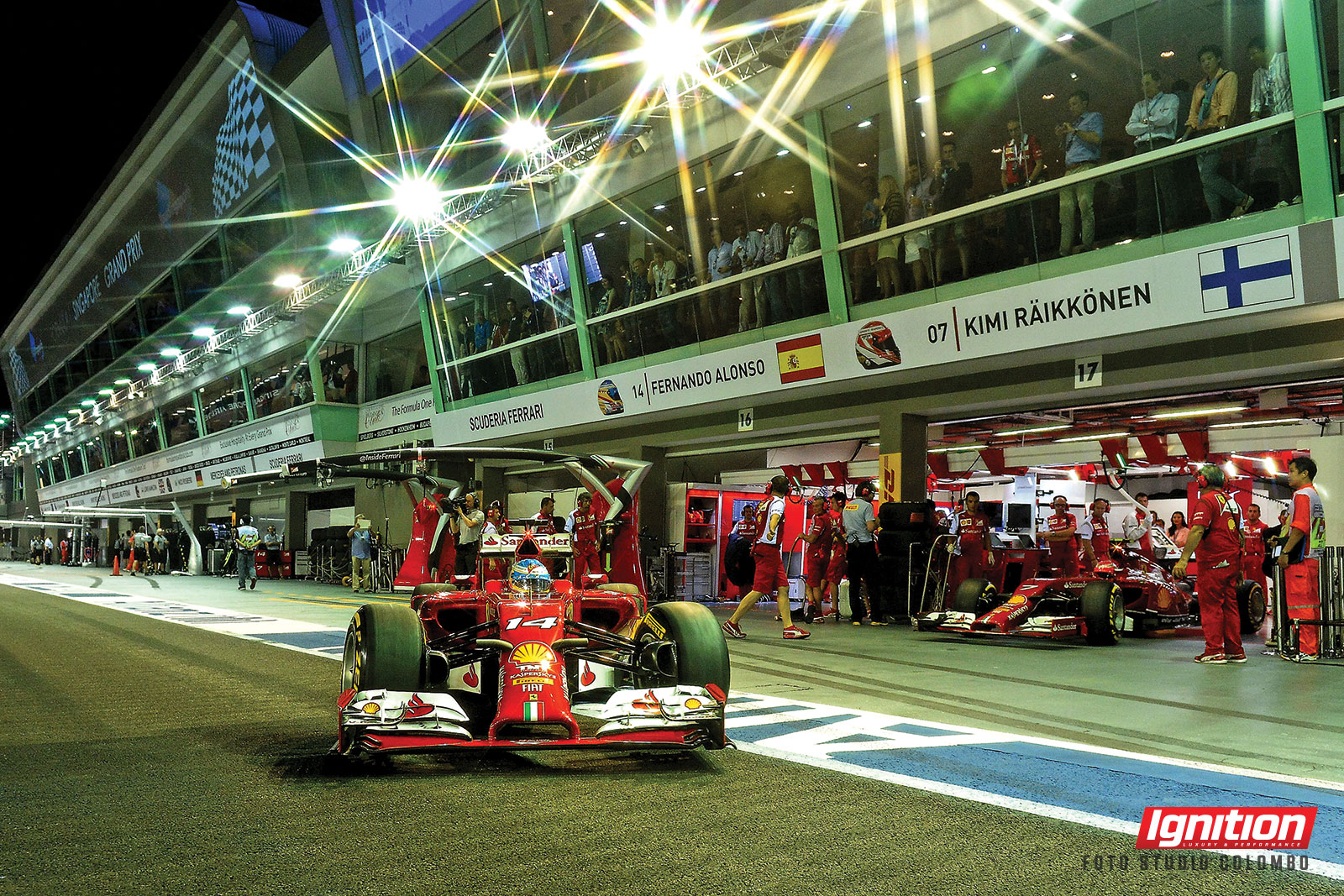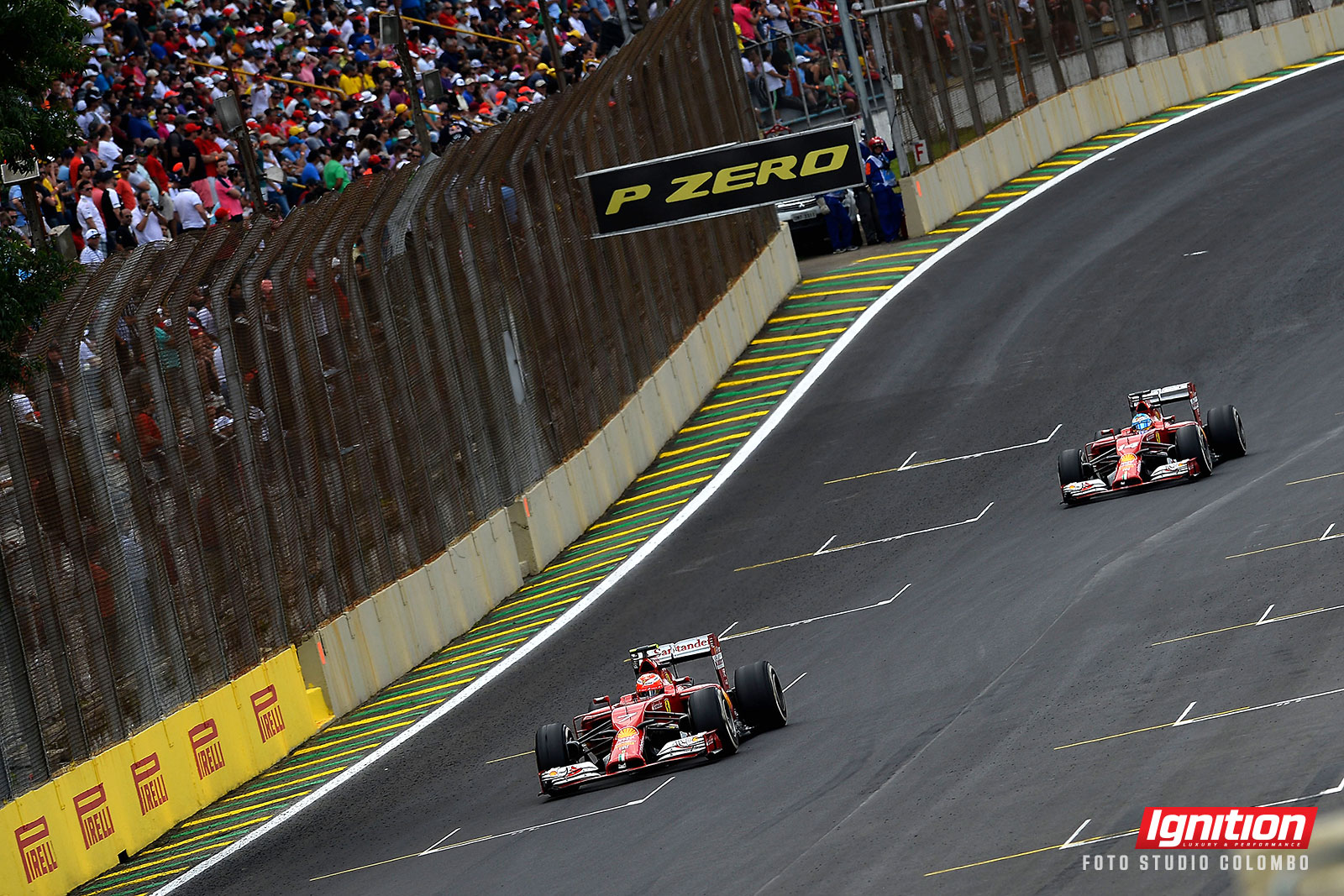
As the sun set on the 2014 Formula One season, the new regime at Ferrari set about cleaning house. In the process, a number of accomplished individuals walked or were given their papers and a host of others were welcomed to Maranello. One of those who departed for pastures greener was lead driver Fernando Alonso and Pat Fry, the team’s former technical chief.
Soon after his departure, Fry had the occasion to provide an interview for a Brazilian enthusiast site. In that interview, the British engineer encapsulated the reason why Alonso had been vastly more competitive than teammate Kimi Räikkönen in 2014: “There were two issues,” Fry was quoted as saying: “The first is that Fernando is more adaptable and the second is that the limitations of the car and tires are especially difficult with Kimi’s driving style.”
Without a doubt, the competition between the two former world champions turned out to be no contest at all. Alonso out-qualified Räikkönen 16-3 over the course of the season and out-raced the Finn as well; in only one race where both drivers finished did Räikkönen cross the stripe first. Alonso had eight top-five finishes in 2014; Kimi had just one. Alonso scored two podium results; Räikkönen had none. In the final championship standings, the departing driver finished sixth with 161 points and the returnee finished 11th with a mere 55.
Clearly, one driver performed far better than the other – and that driver should have been retained… or should he?
For all his success relative to his teammate in 2014, Alonso still finished a mammoth 223 points behind titlewinner Lewis Hamilton. For the first time since the 2009 season, Alonso also did not win a single race. No one would suggest that Ferrari’s lack of competitiveness this past season was Alonso’s fault – the opposite, in fact. But at what point must the Spaniard assume some responsibility for failing to win the championship the four previous years, when Ferrari was in with a shout?
The Ferrari-Alonso relationship began in the best possible way, with victory in the first race of 2010. But from that point on, there’s been far more disappointment than there have been reasons to celebrate. Let’s also not forget that Alonso last won the championship in 2006, a long time ago. In the eight seasons since, he’s had a race-winning car six different times and he’s won races with those cars… just no titles.

In 2010, Alonso had his best chance at the championship with Ferrari, winning five races during the season and just failing to beat Sebastian Vettel in the final race. Bear in mind, though, that this success happened with a car that Alonso had no part in developing because he was new to Ferrari. The following season, he captured only one win; in 2012, he scored three victories; in 2013, he dropped back to two wins.
It’s also worth noting that, in every single season from 2011 to ’14, Alonso took no victories in any of the final 10 races. So, while other teams and drivers were getting stronger as the seasons progressed, developing their cars to become more competitive, the Spaniard was not – despite the fact he was working with the largest budget in the sport.
There’s very little debate as to whether Alonso is a fantastic racing driver with the rare ability to secure top results with second-rate machinery. The question is: Where does he rate as a development driver? And another question: Is he too adaptable for his own good? After all, if a driver produces decent results with a mediocre car, maybe he’s hurting himself in the long run. Maybe he’s masking how much work needs to be done to the car to make it truly competitive.
For all his faults – and there are more than a few – Räikkönen is an unquestionably fast driver… when he has a car that suits his driving style. He shares the all-time record for fastest laps in a season with 10, a mark he made in 2005 with McLaren and again in 2008 with Ferrari. He also has 40 fastest laps in total, third on the all-time list behind only Michael Schumacher and Alain Prost. That’s a greater total than Alonso (21), Hamilton (20) and Vettel (24), drivers who have all enjoyed more races in truly competitive cars than Räikkönen. But perhaps his greatest strength is this: the Finn doesn’t rest until he has a car that suits his driving style perfectly.
When Räikkönen was at McLaren, Fry was there part of the time as well, overseeing the engineering of both team cars after previously being race engineer for Mika Häkkinen and then David Coulthard. He knows a driver’s strengths and weaknesses, then. “He was very sensitive to the front of the car,” Fry noted, speaking more about Kimi’s struggles in 2014. “It was the same at McLaren. When he and Montoya were together, I think we had about seven different front suspensions for the season.”

When the Finn rejoined F1 in 2012, he was notoriously unrelenting with the Lotus engineers, requesting change after change to the steering of the E20. But the persistence paid off: Räikkönen had a stellar comeback year, winning one race towards the end of the season and taking third in the championship. In 2013, he took another race win and was competitive until a change to the Pirelli tire compound saw him lose the front-end feeling that he evidently craves.
Clearly, last season was largely disastrous for Räikkönen, his worst as an F1 driver. And for someone with as much experience, the Finn should be far better at adapting his driving style to suit the car. On the surface, it also seems that it takes him a long time to communicate exactly what he wants to change – either that, or he’s particular to a fault.
But, say you’re an F1 team manager and you have a choice to make on the driver front: you can have one former world champion who drives his heart out every race, or another who works tirelessly to develop a winning car. The secret: pick the one driver who is extremely adaptable, just not to a fault.






















